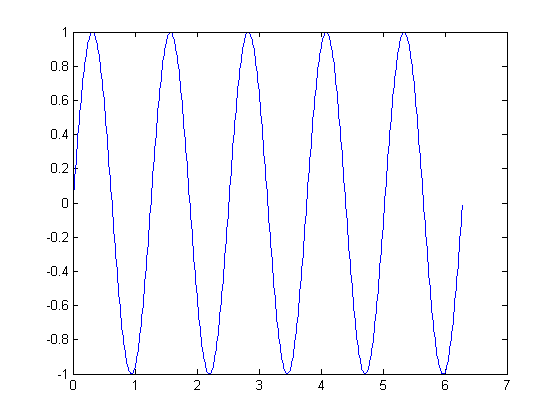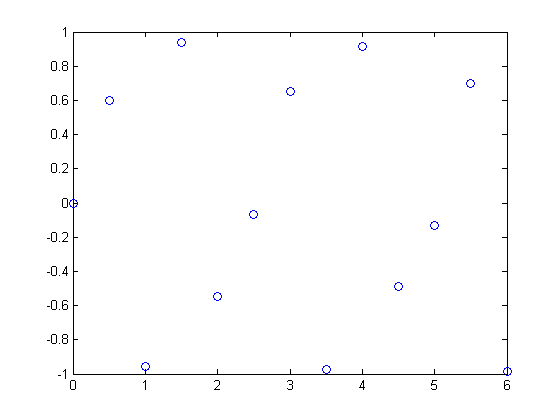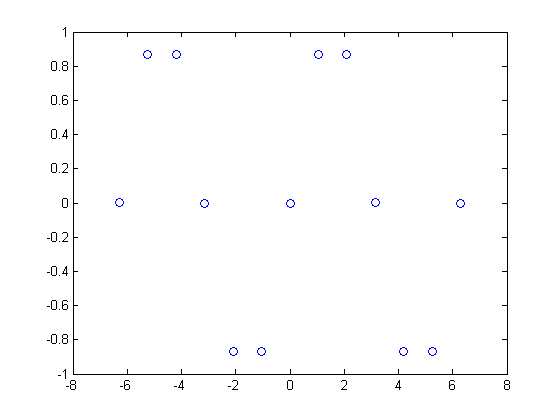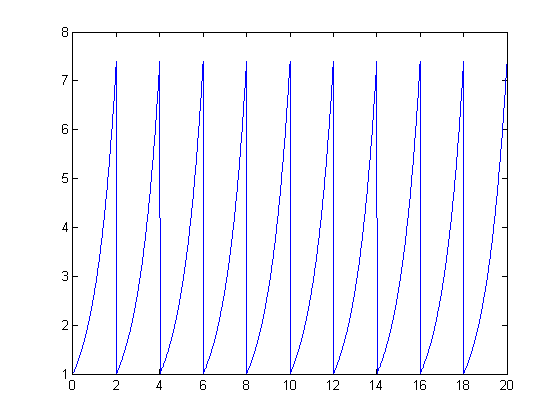Periodic Signals Revisited
The function chosen (by randomly clicking a name) from hw1 is y=sin(t). Found here: http://cobweb.ecn.purdue.edu/~mboutin/ECE301/Index.html
I chose to modify the signal a bit and make it y = sin(5t).
- If you plot the signal in DT sampling at 5Hz you get a non-periodic signal as follows:
- It looks very close to periodic, but it does not follow the definition of x(n+N) = x(n) that was learned in class. However, there are no integer values that can be used to sample this function to create a periodic function in DT.
- One can use $ pi/3 $ to sample the function and create a periodic signal.
Part 2
We can take a non-periodic signal $ y(t) = exp(t) $ and shift it an infinite number of times periodically to create a periodic signal.





